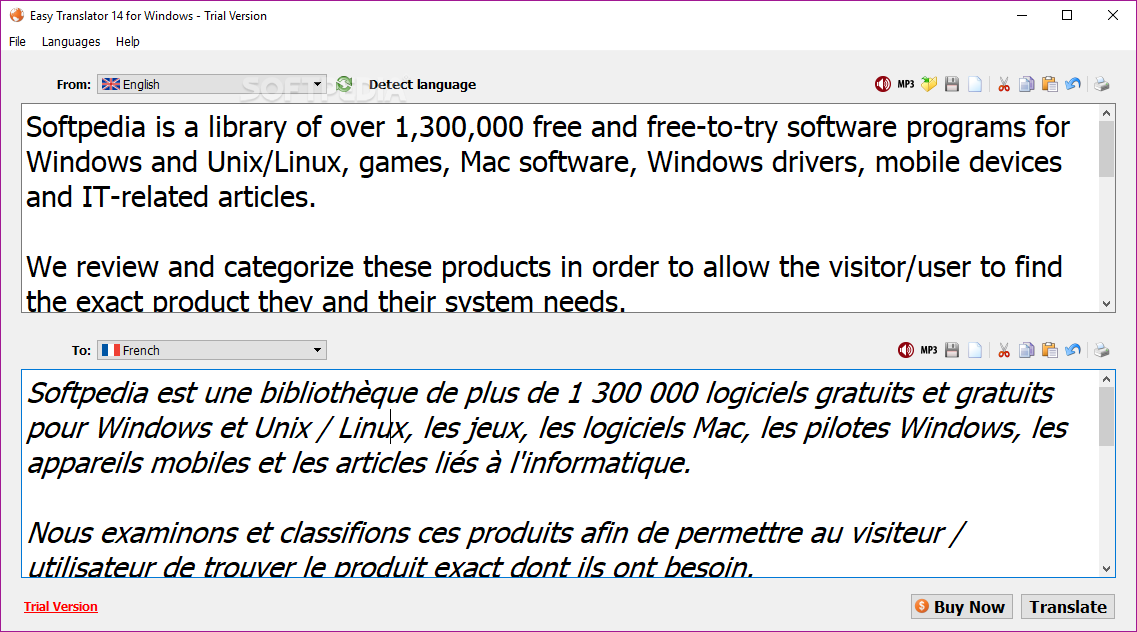
- #EASY TRANSLATOR SOFTWARE HOW TO#
- #EASY TRANSLATOR SOFTWARE SOFTWARE#
- #EASY TRANSLATOR SOFTWARE CODE#
Similarly, a glossary (also known as termbase, or dictionary) of company-specific terminology - such as product names or special terms used by a company to differentiate themselves from the competition - ensures specific words and terms are translated consistently.
#EASY TRANSLATOR SOFTWARE HOW TO#
Read more on how to lower your localization costs. Note: Not only do TMs save money, but they improve the overall quality and consistency of translated content. Around 30% of everything we do currently is already available in the TM.” “Translation memory can be a huge advantage financially speaking. In the words of one Translation Manager at Star Stable Entertainment : But TMs are significant cost-savers both in the short term (they start working within your first project) and, especially, in the long term. The time-saving benefit is clear: saving translations as you go means you don’t need to translate the same term twice. Everything that you and your team members type into an editor, upload, or set via an API is saved automatically for future use. Translation memoryĪ Translation memory (TM) is a database of sentences or segments of text that can be automatically reused when translating similar or identical content in your projects. Here are the main CAT features you should look for: 1.
#EASY TRANSLATOR SOFTWARE SOFTWARE#
Specialist software like Lokalise has CAT tool functionality as well as TMS features, which we’ll get into in the next section. They allow previously human-translated text to conveniently pop up for the translator, allowing them to browse through already translated content and match new requests to a translation memory result. When choosing a translation software system, keep these features in mind: Computer-Assisted Translation Software FeaturesĬAT tools cut down a translator’s workload and improve translation speed, quality, and consistency. No single translation software tool is perfect, but most translation management programs include three components: computer-assisted translation (CAT) tools, workflow automation tools, and project management tools. Instead of just catering to linguists, a TMS is built for everyone involved in the localization process: designers, developers, product & project managers, localization managers, content managers, and copywriters.īoth cloud-based and desktop TMS options exist, which is a good place to start when choosing a system. In a nutshell, these systems automate and organize the localization workflow and track the progress of different translation projects. What you’re likely looking for is a modern TMS that can help accelerate the translation or localization process for your entire team.

Today, widely available translation management systems (TMS) are pioneering the translation software space. Development of these tools was often ad hoc and unstructured, and as a result, quite buggy and unreliable.
#EASY TRANSLATOR SOFTWARE CODE#
When localization became the new paradigm for translation, many software developers built proprietary tools that were tailored to their own source code format and standards. The first translation technology involved simple, computer-assisted tools that provided linguists with specific translations. Initially, translation software was developed to support translators. Translation software: what is it and who is it for?



 0 kommentar(er)
0 kommentar(er)
